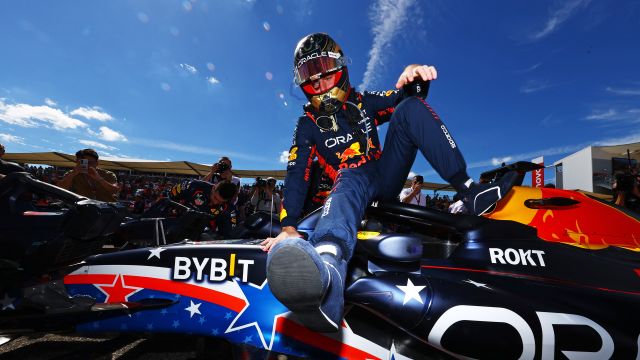How Much Does Red Bull Make From F1?


You’ve probably found yourself wondering about the financial dynamics of Formula 1, especially when it comes to powerhouse teams like Red Bull. How does their involvement in F1 translate to their earnings?
In 2022, Red Bull’s revenue from F1 was a staggering $395 million USD, with a profit margin of $4 million.
In this article, we’ll delve deeper into the financial intricacies of Red Bull’s involvement in Formula 1. From understanding the sources of their revenue to the costs associated with running a top-tier racing team, we’ll provide a comprehensive overview. By the end, you’ll have a clearer picture of the economic engine that drives one of F1’s most iconic teams.
Red Bull’s F1 Finances
Revenue Streams
One of the primary ways Red Bull generates revenue from F1 is through sponsorships and advertising. Major brands are willing to pay top dollar to have their logos displayed on Red Bull’s cars, driver suits, and even the team’s equipment. These sponsorships can range from minor placements to major title sponsorships, with each bringing in varying amounts of revenue. For example, Oracle is the naming rights sponsor, with a contract believed to be worth $60 million USD per year.
Merchandising and Licensing
Another significant source of income for Red Bull is through merchandising and licensing. Fans around the world purchase Red Bull Racing merchandise, from caps and t-shirts to model cars and other memorabilia. Licensing their brand to video games, toy manufacturers, and other media also brings in a tidy sum.
Prize Money
The performance of the team on the track directly impacts their financial gains. Formula 1 operates on a prize money system, where teams earn based on their standings at the end of the season. With Red Bull consistently being one of the top-performing teams, they secure a significant portion of this prize pool each year.
At the conclusion of the 2023 F1 season, Red Bull received $140 million USD as the winning constructor.
Costs of Running an F1 Team
Running a Formula 1 team is no small feat, and it comes with its own set of hefty expenses. From the costs of developing a competitive car to the salaries of the team members, every dollar counts.
Research and Development
One of the most significant expenses for any F1 team is research and development (R&D). Teams spend millions each year developing new technologies, improving aerodynamics, and ensuring their cars are at the forefront of innovation. For a team like Red Bull, staying competitive means investing heavily in R&D.
Salaries and Team Operations
Beyond the car itself, the team members play a crucial role in the success of any F1 team. From the drivers to the engineers and the pit crew, everyone needs to be compensated for their expertise and hard work. Additionally, the costs of travelling to different race locations, logistics, and maintaining the team’s headquarters add up.
Sponsorship Deals and Partnerships
While sponsorships bring in revenue, they also come with their own set of obligations and costs. Meeting the demands of sponsors, hosting events, and ensuring brand visibility can sometimes be a costly affair.
Meeting Sponsor Expectations
Sponsors expect a certain level of visibility and engagement in return for their investment. This might mean hosting events, participating in promotional activities, or even reshaping the car’s livery to accommodate a sponsor’s logo prominently.
Collaborative Ventures
Sometimes, sponsorships evolve into deeper partnerships. For instance, a technology company sponsoring an F1 team might collaborate on developing new tech for the car. While this can lead to shared costs, it also means shared responsibilities and potential challenges.
Media and Public Relations
In the age of digital media, maintaining a positive public image is paramount. Red Bull, being a prominent team, invests significantly in its media and PR efforts.
Engaging with Fans
Engaging with fans goes beyond just social media posts. Hosting events, virtual meet-and-greets, and ensuring fans feel connected to the team is essential. This not only boosts the team’s image but also helps in driving merchandise sales.
Handling Controversies
Like any major sport, F1 is not without its controversies. Teams often have to navigate sensitive issues, be it related to race decisions, driver behaviours, or other incidents. Having a robust PR team helps in managing these situations and ensuring the team’s reputation remains untarnished.
The Business Side of F1
Formula 1 is not just a sport; it’s a business empire. The financial dynamics of teams like Red Bull are influenced by the broader business landscape of F1.
Broadcasting Rights and Revenue
Formula 1 races are broadcast in over 180 countries, reaching a vast global audience. Broadcasting rights are a significant source of revenue for the F1 industry. Teams like Red Bull benefit from the shared revenue model, where a portion of the broadcasting rights income is distributed among the teams based on their performance and historical significance.
Merchandising Beyond F1
Red Bull, as a brand, extends beyond just F1. Their involvement in various sports and events means they have a diversified merchandising portfolio. From energy drinks to apparel and even music events, the Red Bull brand is omnipresent. This diversification helps cushion the F1 team from any potential downturns in the sport’s popularity or performance.
The Impact of Regulations
Regulations play a pivotal role in shaping the financial landscape of F1 teams. Changes in rules can have a direct impact on team expenses and strategies.
Technical Regulations
F1 is known for its ever-evolving technical regulations. These rules, set by the FIA, dictate the design and functioning of the cars. Any change in these regulations can mean teams, including Red Bull, might need to invest heavily in redesigning parts of their car or even their entire strategy.
Financial Regulations
In recent years, there’s been a push towards making F1 more sustainable and competitive. The introduction of budget caps is a step in that direction. Teams now have a limit on how much they can spend in a season, ensuring a more level playing field. For a big spender like Red Bull, this means re-evaluating financial strategies and looking for efficiencies.
The Future of Red Bull in F1
With the ever-changing landscape of Formula 1, what does the future hold for Red Bull Racing?
Sustainability and Green Initiatives
The global push towards sustainability hasn’t left F1 untouched. Teams are now looking at greener technologies and practices. Red Bull, being an industry leader, is at the forefront of these initiatives, investing in sustainable tech and practices both on and off the track.
Expanding the Red Bull Empire
Red Bull’s involvement in F1 is just one facet of their global sports empire. As they continue to diversify their interests, we can expect to see more integration between their various ventures, potentially leading to cross-promotional opportunities and even more fan engagement.
How Much Does Red Bull Make From F1? – Final Thoughts
Navigating the high-octane world of Formula 1, you’ve now gained a deeper understanding of the financial intricacies behind Red Bull Racing. From the substantial revenues they generate to the myriad of expenses they incur, it’s clear that running an F1 team is as much a business endeavour as it is a sporting one. As you continue to follow the exhilarating races and behind-the-scenes dramas, remember that every overtaking manoeuvre, every pit stop, and every podium finish has a story, not just of sporting prowess but also of strategic financial planning and execution. Keep cheering, and may the best team win!
You may also like…






